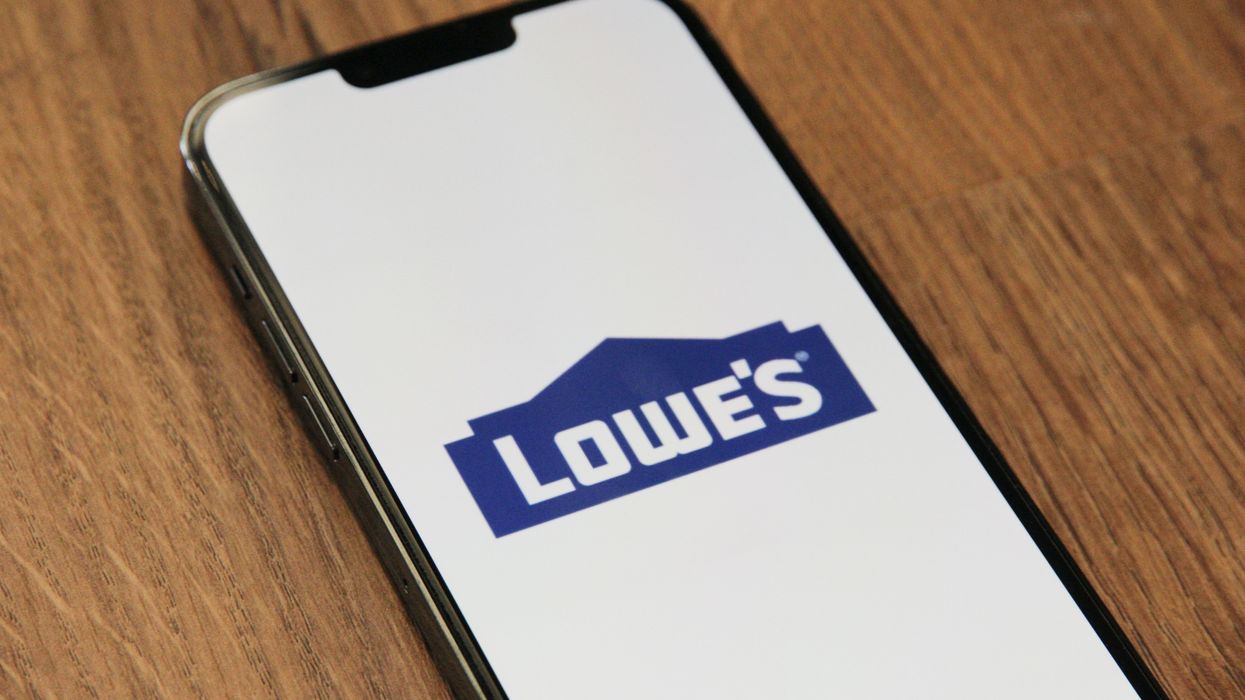Marketing
13 January 2023
Lowe's brings retail media in-house
Operations, sales and advertising for the One Roof Media Network will be handled by Lowe's teams.

Photo by Marques Thomas on Unsplash
Operations, sales and advertising for the One Roof Media Network will be handled by Lowe's teams.

Lowe’s retail media network operates under the banner of One Roof Media. Fittingly, it is now bringing more of the network’s operations in-house.
The news: Lowe’s will move all operations, sales and advertising teams for its retail media network under the One Roof Media Network. With the exception of a few partnerships, the home improvement giant will no longer work with outside tech companies agencies, effective Jan. 31.
What are the exceptions? Lowe’s said sponsored search and product ads will still be powered by Criteo, while Yahoo will power offsite advertising that uses the Lowe’s network and data, such as digital out-of-home, addressable TV and connected TV.
Does this come with improved capabilities? Yes, Lowe’s also said it launched new advertising technology features for the network. These include:
Key quote: "This is the next step in becoming a best-in-class media network and delivering white-glove customer service for our brand partners," said Jen Wilson, SVP of enterprise brand and marketing at Lowe's, in a statement. "Managing these functions internally under one roof will enable us to build stronger, more compelling campaigns better aligned with our brands and customers' interests and needs, which in turn will drive increased shopper engagement and greater ROI for our advertisers."
Is Lowe’s making progress with retail media? Yes, the network launched in 2021. It currently serves more than 200 clients, such as Moen, Stanley Black & Decker and Whirlpool Corporation. Through advertising on its ecommerce site and other properties, the network helps brands connect with a customer base of more than 100 million shoppers.
What it says about retail media:
Cross-category: Much of the attention on retail media is focused on Amazon, Walmart and grocery businesses such as Instacart and Kroger. Their large assortments and well-trafficked marketplaces lend well to the advertising models. Lowe’s progress on this front is a sign that there are retail media opportunities in specific categories beyond the widest retailers. The key components are a marketplace with lots of visitors and capabilities to leverage first-party data and run advertising. What you’re selling is less important. The potential for growth into new areas of commerce is one reason why eMarketer projects retail media spend will reach $61.2 billion in 2024 in the U.S., which is nearly 20% of total digital ad spend.
Going under one roof: While retailers are the names on all of the retail media networks that launched over the last couple of years, many of them are powered by tech companies and agencies that do the lifting and provide the systems behind the scenes. But with growth, there are opportunities to build an internal team. Lowe’s is opting for this path. As others follow, it’s a big reason why retailers will look more like tech companies going forward. It begs a question: Will this give way to consolidation among tech providers as a result?On the Move has the latest from Amazon, Lovesac and more.
Ryan Cohen is executive chairman of GameStop. (Photo by Flickr user Bill Jerome, used under a Creative Commons) license.
This week, leadership is changing at GameStop, Sorel and Beautycounter. Meanwhile, key executives are departing at Amazon, Wayfair and Lovesac.
Here’s a look at the latest shuffles:
GameStop announced the termination of Matthew Furlong as CEO on Wednesday. A brief statement did not provide a reason for the firing.
With the move, Chewy founder and activist investor Ryan Cohen was named executive chairman of the video game retailer. Cohen will be responsible for capital allocation and overseeing management.
It came as the company reported a 10% year-over-year decline in net sales for the first quarter. Meanwhile, the company’s net loss improved by 62%.
In an SEC filing, GameStop further added this “We believe the combination of these efforts to stabilize and optimize our core business and achieve sustained profitability while also focusing on capital allocation under Mr. Cohen’s leadership will further unlock long-term value creation for our stockholders.”
Cohen was revealed as GameStop's largest shareholder when he disclosed a 10% stake in the retailer in 2020. GameStop went on to become a leading name in the meme stock rise of 2021.
Mark Nenow is stepping down as president of the Sorel brand in order to focus on his health.
After rising to the role in 2015, Nenow spearheaded a transformation of Columbia Sportswear-owned Sorel from a men’s workwear brand to a fashion-focused brand that led with a women’s offering of boots, sandals and sneakers.
“Mark led the brand to sales of $347 million in net sales in 2022,” said Columbia Sportswear CEO Tim Boyle, in a statement. “His leadership has been invaluable to this company, and we wish him the very best.”
Columbia will conduct a search for Nenow’s replacement. Craig Zanon, the company’s SVP of emerging brands, will lead Sorel in the interim.
Beautycounter appointed board member Mindy Mackenzie as interim CEO, succeeding Marc Rey. According to the brand, Rey and the board “mutually decided to transition to a new phase of leadership for Beautycounter.”
McKenzie, a former executive at Carlyle, McKinsey and Jim Beam, will lead the company as it conducts a search for a permanent CEO. Additionally, former Natura & Co CEO Roberto Marques will join Beautycounter’s board as chair.
As part of the transition, Nicole Malozi is also joining the company as chief financial officer. She brings experience from Tatcha, Nike, and DFS Group Limited.
Melissa Nick, a VP of customer fulfillment for North America at Amazon, will leave the company, effective June 16, CNBC reported. Nick joined the company in 2014, and oversaw a region that included nearly 300 fulfillment centers. After doubling its supply chain footprint during the pandemic, Amazon recently reorganized its fulfillment operations to take a regional approach, as opposed to a national model that often resulted in items shipping across the country.

Jon Blotner (Courtesy photo)
Steve Oblak will retire from the role of chief commercial officer at home goods marketplace Wayfair. With the move, Jon Blotner will be promoted to chief commercial officer.
"Steve has served as a critical part of our leadership team and played a pivotal role in Wayfair's growth, helping us grow from a $250 million business when he joined to $12 billion in net revenue today,” said Wayfair CEO Niraj Shah, in a statement. “He oversaw countless milestones, from helping to launch the Wayfair brand as we brought together hundreds of sites into a single platform, to launching new categories, business lines, and geographies while overseeing our North American and European businesses, to leading our debut into physical retail.”
Blotner previously oversaw exclusive and specialty retail brands, as well as digital media at Wayfair. Before joining the company, he served as president of Gemvara.com prior to its 2016 acquisition by Berkshire Hathaway.
Furniture retailer Lovesac said Donna Dellomo will retire as EVP and CFO, and move to an advisory role, effective June 30. Dellomo was with Lovesac for six years.
Keith Siegner was appointed as the next EVP and CFO. He brings experience as CFO of esports company Vindex, as well as executive roles at Yum! Brands, UBS Securities and Credit Suisse.
Additionally, Jack Krause will retire from the role of chief strategy officer, effective June 30. His responsibilities will be divided between CEO Shawn Nelson and president Mary Fox.
“Since joining Lovesac, Jack has played an instrumental role in transforming the Company into a true omni channel retailer by helping expand our physical touchpoints and digital platform as we continue to disrupt the industry,” said Nelson, in a statement.
The National Retail Federation announced the addition of five new board members. They include: